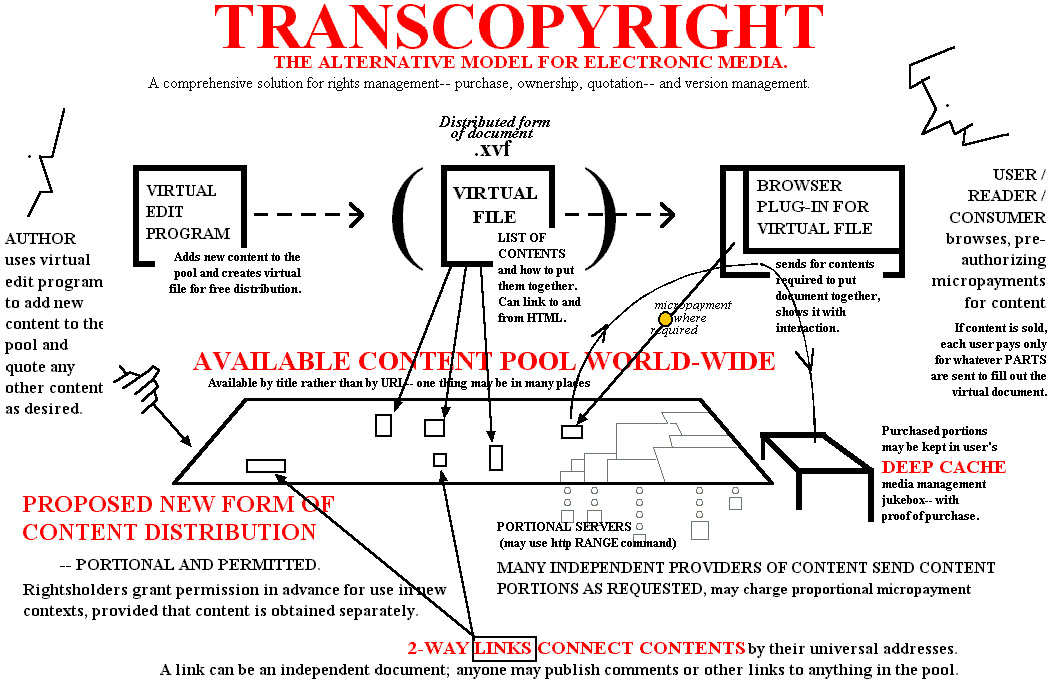TRANSCOPYRIGHT FOR THE WEB
A clean legal and technical system for re-using on-line
content
TRANSCOPYRIGHT FOR THE WEB
A clean legal and technical system for re-using on-line
content
The Web has finally discovered the copyright issue, but still at a naive level.NOT ALL CONTENT WILL BE FREEThe excitement over Napster has been about the right to download and save content in whole files and chunks. This does not even begin to address the much deeper issue of how we can sensibly re-use content among on-line documents.
For scholarship, for understanding, and for appreciation, we need to be able to quote things in large quantity, in open republication-- but no one has seen the obvious path, which has always been the Xanadu model.
Never mind about the Napster-style thieving by night. The Xanadu project proposes an honest method that can be used in the open by people with day jobs and supported openly by ethical service providers.
Lots of content will be free. But lots of other content will cost money; many publishers are seeing to that, and the issue is how to live with these relationships cleanly.HOW WE CAN RE-USE AND MIX CONTENTSHow can we live and work in this real world? How can we be allowed to make detailed and connected comments? (For a sample of how connected comments should work, try our free CosmicBook(tm) reader.)
Here is the fundamental objective of the transcopyright system:THE XANADU MODELTO BE ABLE TO MIX CONTENTS IN ANY QUANTITY FROM ALL SOURCES, FOR COMMENT AND UNDERSTANDING, WHETHER THOSE SOURCES COST MONEY OR NOT.Many people complain about that fact that this is not now possible, but want the laws to go away, which they won't. We believe we have a uniquely beneficial method.The Xanadu model has always been very simple: make content available with certain permissions; then distribute and maintain documents simply as lists of these contents. The browser then obtains the contents separately.THE XANADU MODEL AND TRANSCOPYRIGHTThis means (in principle) that everyone can re-use all contents. The problem is in the details; what follows is a clean and consistent set of details.
Here's how this can work on the Web with our new Web formats. (It may sound complex, but it is no more complex than the World Wide Web today-- just very different.)The transcopyright system is this. As in the Xanadu model:
• a virtual format, listing the contents;And in addition:
• an editing system that manages this virtual format;
• proportional delivery on request;• a permission system by rightsholders in advance (transcopyright permission-- see original article and as published);The following picture ties it all together. It may look complex, but that's because we don't have time to make a simpler diagram :)
• for those contents which cost money, a proportional micropayment system (overlay or gateway micropayment);
• a caching method for content which has already been acquired (Deep Cache).

•